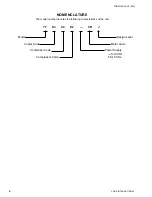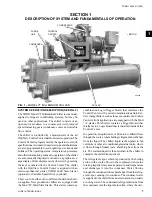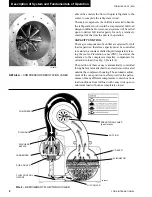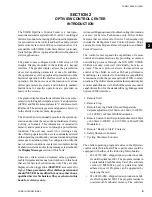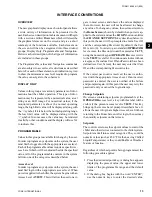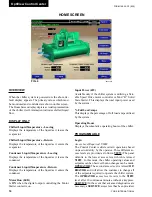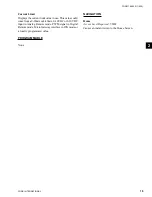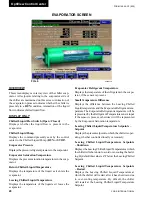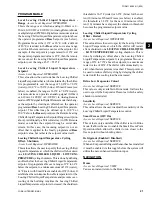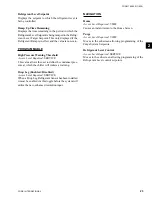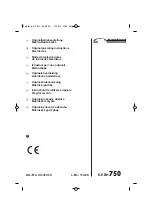
FORM 160.55-O1 (920)
9
YORK INTERNATIONAL
SECTION 2
OPTIVIEW CONTROL CENTER
INTRODUCTION
The YORK OptiView Control Center is a micropro-
cessor based control system for R-11 or R123 centrifugal
chillers. It controls the leaving chilled liquid temperature
via pre-rotation vane controls and has the ability to limit
motor current via control of the pre-rotation vanes. It is
compatible with YORK Solid State Starter (optional),
Variable Speed Drive (optional) and Electro-Mechanical
starter applications.
The panel comes configured with a full screen LCD
Graphic Display mounted in the middle of a keypad
interface. The graphic display allows the presentation
of several operating parameters at once. In addition,
the operator may view a graphical representation of the
historical operation of the chiller as well as the present
operation. For the novice user, the locations of various
chiller parameters are clearly and intuitively marked.
Instructions for specific operations are provided on
many of the screens.
The graphic display also allows information to be repre-
sented in both English (temperatures in °F and pressures
in PSIA) and Metric (temperatures in °C and pressures in
kPa) mode. The advantages are most apparent, however,
in the ability to display many languages.
The Control Center continually monitors the system op-
eration and records the cause of any shutdowns (Safety,
Cycling or Normal). This information is recorded in
memory and is preserved even through a power failure
condition. The user may recall it for viewing at any
time. During operation, the user is continually advised
of the operating conditions by various status and warning
messages. In addition, it may be configured to notify the
user of certain conditions via alarms. A complete listing
of shutdown, status and warning messages is attached in
the
Display Messages
section of this book.
There are certain screens, displayed values, program-
mable Setpoints and manual control shown in this book
that are for Service Technician use only. They are only
displayed when logged in at
SERVICE
access level or
higher.
These parameters affect chiller operation and
should
NEVER
be modified by anyone other than a
qualified Service Technician. They are shown in this
book for reference only.
Advanced Diagnostics and troubleshooting information
are also for Service Technicians only. Other chiller
features that are relevant for Service Technicians only
include the Refrigerant Level Control (Future), Purge
system, Hot Gas Bypass, Remote Setpoints, and Smart
Freeze Protection.
The control center expands the capabilities of remote
control and communications. By providing a common
networking protocol through the ISN GPIC YORK
Chillers not only work well individually, but also as
a team. This new protocol allows increased remote
control of the chiller, as well as 24-hour performance
monitoring via a remote site. In addition, compatibility
is maintained with the present network of ISN commu-
nications. The chiller also maintains the standard digital
remote capabilities as well. Both of these remote control
capabilities allow for the standard Energy Management
System (EMS) interface:
1. Remote Start
2. Remote Stop
3. Remote Leaving Chilled Liquid Temperature
Setpoint adjustment (0-20mA or 4-20mA, 0-10VDC
or 2-10VDC) or Pulse Width Modulation
4. Remote Current Limit Setpoint adjustment (0-20mA
or 4-20mA, 0-10VDC or 2-10VDC) or Pulse Width
Modulation
5. Remote “Ready to Start” Contacts
6. Safety Shutdown Contacts
7. Cycling Shutdown Contacts
The chiller operating program resides in the Optiview
control center Microboard. The control center could be
equipped with either of the following Microboards:
• 031-01730-000 – shipped in new production chill-
ers until September 2003. The program resides in
a replaceable Flash Memory Card. The software
version (C.MLM.02.xx.yzz) is printed on label
adhered to card. Program can be upgraded by
replacing the card.
• 031-02430-000 – shipped in new production chill-
ers after September 2003. The program resides in
non-removable onboard memory. The software
2




